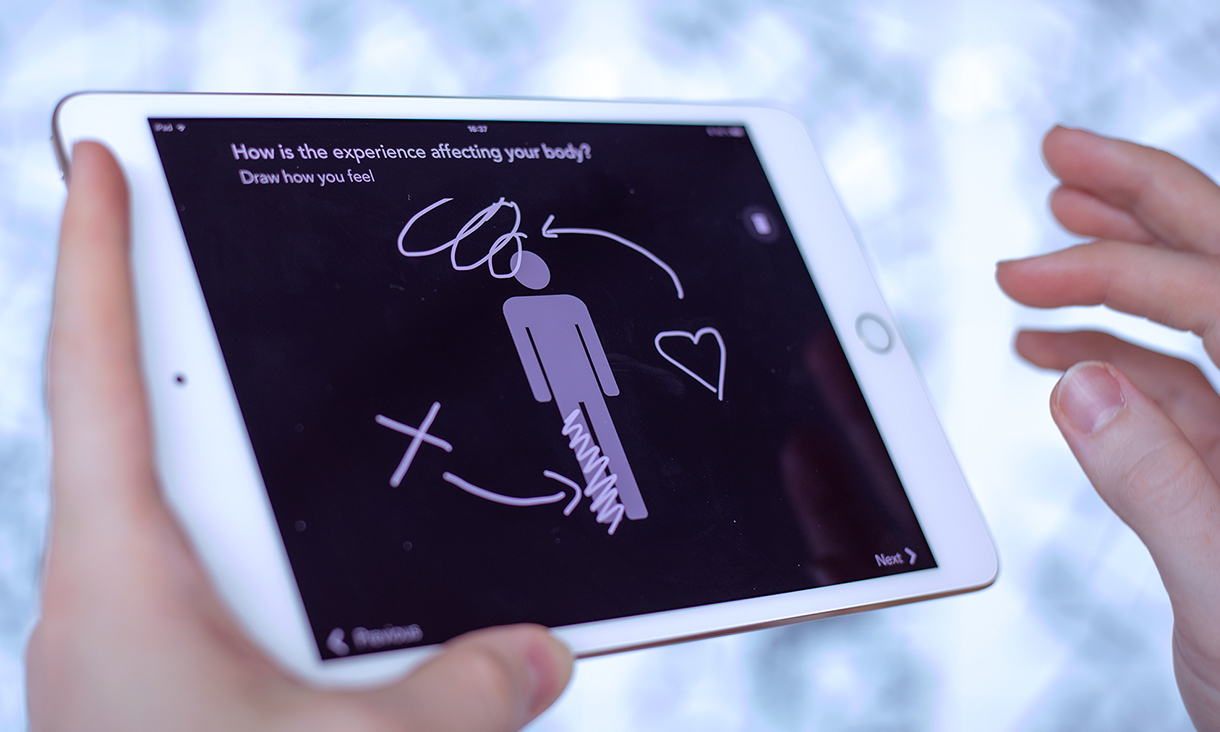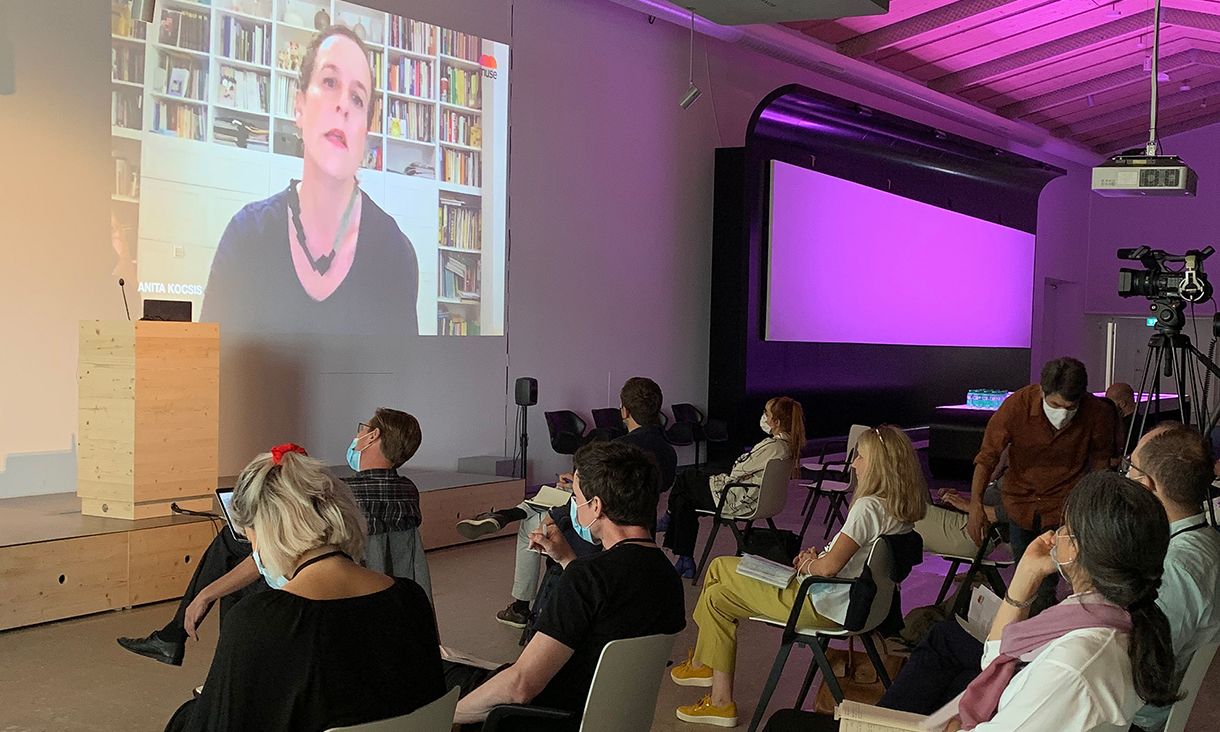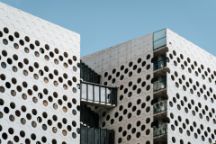New digital tool to improve visitors’ museum experience

Visitors can use the muse platform to draw how they feel about an exhibit at the École polytechnique fédérale de Lausanne (EPFL) Artlab in Switzerland. Credit: Sarah Kenderdine
In summary
- Digital tool ‘muse’ allows for the individualised collection of data around museum visitor experiences
- The platform was co-founded by the Director of Swinburne’s Design Factory Melbourne, Professor Anita Kocsis, and designed by an international research team
- Eight museums in Switzerland are providing industry feedback on the design
Museums come alive through the eyes of visitors. That makes a digital tool like muse invaluable in gathering feedback on visitor experiences.
The creative, forward-thinking design was co-founded by Director of Swinburne’s Design Factory Melbourne, Professor Anita Kocsis, and Professor Sarah Kenderine, who is an expert in digital museology and the director and lead curator the Swiss Federal Institute of Technology Lausanne’s (EPFL) Artlab, and Laboratory for Experimental Museology in Switzerland.

With funding and support from the Migros Pioneer Fund and the Laboratory for Experimental Museology, the international research team launched ‘muse’ in Switzerland in September 2020. Credit: Mary Yacob.
What is muse?
Far from a boring survey, muse features an engaging, interactive design that allows museums to gather feedback on exhibits and other attractions. It allows users to communicate through drawings, voice recordings, interaction with animated graphics or photos they’ve taken. It gathers diverse data on how visitors feel and think.
The platform also aggregates quantitative data, including age, gender, geographic origin and the number of repeat visits, and it is supported in many languages. But it’s the focus on the individual and data analytics of creative expression that makes the platform truly innovative.

Visitors are invited to take a photo of their favourite part of the exhibit or experience in muse – a feature tested at EPFL’s Artlab. Credit: Sarah Kenderdine.
“Through muse, audiences become an active part of the exhibition and assist curators and exhibition designers to explore the value of content presented by cultural organisations,” says Professor Kocsis.
Muse provides real-time feedback on exhibitions and programs, so the experience is more relevant and engaging to visitors. Information collected is based on direct insights through real-time dashboards and data analytics.

A visitor to the Hong Kong Maritime Museum draws her favourite artwork on muse. Credit: Volker Schubert.
The first phase of development was conducted in 2020 in collaboration with eight partner museums in Switzerland: Museum of Design Zurich, the Rietberg Museum in Zurich, House of Electronic Arts Basel (HeK), Geneva Museum of Ethnography (MEG), International Red Cross and Red Crescent Museum in Geneva, the Château de Morges and its museums, the Olympic Museum in Lausanne and EPFL Pavilions.

Live public data from muse was displayed at the World Economic Forum in Tianijin, China. Credit: Allan Jones.
Design innovation at Swinburne
Swinburne’s Professor Kocsis is a pioneer in early-stage design innovation and applied experience research with over fifteen years’ experience in commercial and corporate sectors. She is a leader in design-led innovation, research translation and commercialisation.
Professor Kocsis embraces a co-creative and experimental approach to improving the agency of the human experience in complex, cross-sectoral and interdisciplinary projects. Her work spans science and technology, astrophysics, semi-immersive environments and the ‘co-experience’ of places.
“Experience research through design is an iterative transdisciplinary framework that explores the diffusion of subjective and complex science and technology experiences relevant to broad fields, such as challenges in science communication, health-patient experiences and end use case scenarios,” says Kocsis.
-
Media Enquiries
Related articles
-

- Astronomy
- Technology
- Health
- Science
- University
- Sustainability
- Engineering
Swinburne highly cited researchers reach the top in 12 fields
Ten Swinburne academics have been named on the Highly Cited Researchers 2025 list, released by Clarivate
Tuesday 02 December 2025 -

- Technology
- Health
- Science
- University
$1.2m ARC funding to boost national X-ray spectroscopy capability through Swinburne and QUT partnership
Swinburne has secured $1.2 million in the latest Australian Research Council Linkage Infrastructure, Equipment and Facilities scheme round
Tuesday 02 December 2025 -

- Astronomy
- Technology
- Science
- Engineering
Meet Swinburne’s Roo-ver Mission team
Roo-ver will be Australia's first lunar rover, and it’s being designed, built and tested in Australia. Swinburne is playing a key role in the design and construction of Roo-ver, through its involvement in the ELO2 Consortium.
Wednesday 26 November 2025 -

- Technology
- Health
- Science
- University
- Aviation
- Engineering
Swinburne’s Mobile Innovation Lab hits the road
Swinburne’s Mobile Innovation Lab is a cutting-edge mobile facility designed for research, industry collaboration, STEM education, training and outreach.
Thursday 06 November 2025 -

- Design
- Student News
How Hao Wei is uniting design and technology to solve problems
Hao Wei Tu enrolled in a study abroad program at Swinburne and is now pursuing a PhD with Swinburne’s School of Design and Architecture and Design Factory Melbourne
Thursday 20 November 2025

